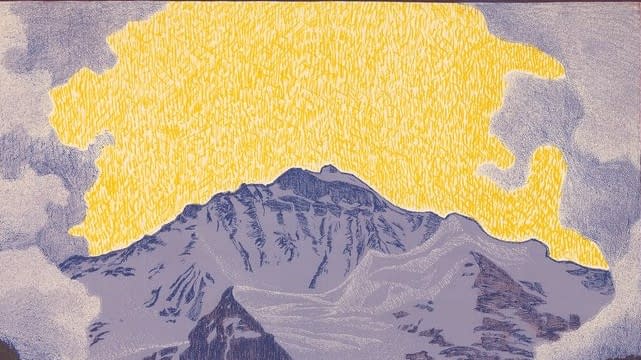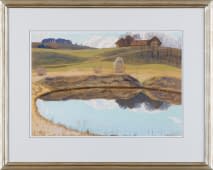Plinio Colombi
né(e) le 14. février 1873 à Ravecchia
décédé(e) le 22. septembre 1951 à Spiez
Style artistique
À propos
Plinio Colombi begann 1893 ein Architekturstudium am Technikum in Winterthur, wechselte jedoch bald in die kunstgewerbliche Abteilung. Nach Abschluss der künstlerischen Ausbildung hielt er sich in Paris auf, bevor er sich in Bern als Dekorationsmaler niederliess. Colombis erste Landschaften verraten noch die Bewunderung für die symbolistische Malerei von Arnold Böcklin, nach 1905 wendete er sich aber einer realistischeren Naturauffassung zu, die vom Frühwerk Ferdinand Hodlers beeinflusst wurde. Colombi fand seine Motive zunächst im Engadin und im Berner Oberland. 1924 siedelte der Künstler nach Spiez über.
Plinio Colombi began studying architecture at the Technikum in Winterthur in 1893, but soon switched to the arts and crafts department. After completing his artistic training, he spent time in Paris before settling in Bern as a decorative painter. Colombi's first landscapes reveal his admiration for the symbolist painting of Arnold Böcklin; after 1905 he shifted his view to a more realistic perception of nature, drawing influence from the early works of Ferdinand Hodler. Colombi initially found his motifs in the Engadine and the Bernese Oberland. In 1924, the artist moved to Spiez. In addition to his wintery landscape paintings, Colmbi painted still-lifes with thistle motifs. He is also credited with creating remarkable drawings and prints, reinforcing his reputation as one of the pioneers of Swiss poster-art.
Plinio Colombi began studying architecture at the Technikum in Winterthur in 1893, but soon switched to the arts and crafts department. After completing his artistic training, he spent time in Paris before settling in Bern as a decorative painter. Colombi's first landscapes reveal his admiration for the symbolist painting of Arnold Böcklin; after 1905 he shifted his view to a more realistic perception of nature, drawing influence from the early works of Ferdinand Hodler. Colombi initially found his motifs in the Engadine and the Bernese Oberland. In 1924, the artist moved to Spiez. In addition to his wintery landscape paintings, Colmbi painted still-lifes with thistle motifs. He is also credited with creating remarkable drawings and prints, reinforcing his reputation as one of the pioneers of Swiss poster-art.




